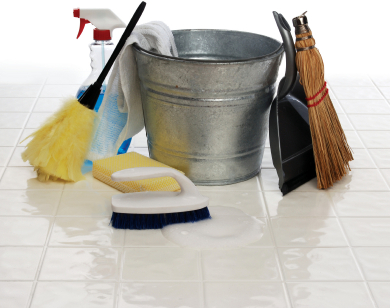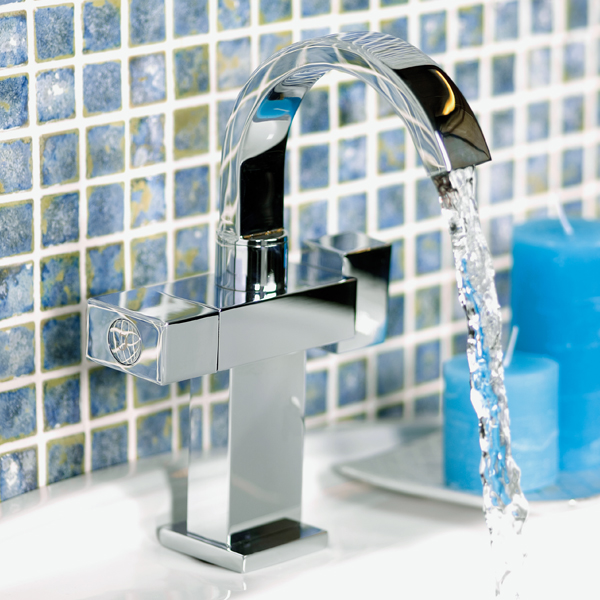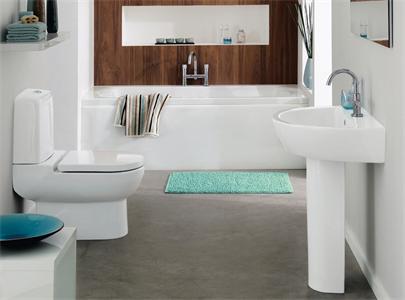Green cleaning tips
1. Home made Substitutions
There are many inexpensive, easy-to-use natural alternatives that can safely be used in place of commercial household products. Here is a list of common, environmentally safe products that can be used alone or in combination for a wealth of household applications.
Baking Soda – cleans, deodorizes, softens water, and scours.
Soap – unscented soap in liquid form, flakes, powders, or bars is biodegradable and will clean just about anything. Avoid using soaps that contain petroleum distillates.
Lemon – is one of the strongest food acids, effective against most household bacteria.
Borax – (sodium borate) cleans, deodorizes, disinfects, softens water, and cleans wallpaper, painted walls and floors.
White Vinegar – cuts grease, removes mildew, ordors, some stains, and wax build-up.
Washing Soda – or SAL Soda is sodium carbonate decahydrate, a mineral. Washing soda cuts grease, removes stains, softens water, and cleans walls, tiles, sinks, and tubs. Use care, as washing soda can irritate mucous membranes. Do not use aluminum.
Isopropyl Alcohol – is an excellent disinfectant. (It has been suggested to replace this with ethanol or 100-proof alcohol in solution with water. There is some indication that isopropyl alcohol build-up contributes to illness in the body. See http://drclark.ch/g)
Cornstarch – can be used to clean windows, polish furniture, and shampoo carpets, and rugs.
Citrus Solvent – cleans paint brushes, oil and grease, and some stains. (Citrus solvent may cause skin, lung, or eye irritations for people with multiple chemical sensitivities.)
Is Borax Safe? Borax is considered a mild skin irritant similar to baking soda. The MSDS lists borax as a health hazard of 1, similar to salt and baking soda. A health concern with borax is its potential to disrupt the reproductive system. Studies have not been done in humans regarding this; however, potential reproductive issues in mice are suspected from high levels of ingested borax. The use of borax for home cleaning formulas, where no borax is ingested, has not been shown to pose health hazards. Borax is a natural substance that is non-carcinogenic, does not accumulate in the body, or absorbs through the skin. It is not harmful to the environment.
2. Formulas
Combinations of the above basic products can provide less harmful substitutions for many commercial home products. In most cases, they’re also less expensive. Here are some formulas for safe, alternative home care products:
Note: These formulas and substitutions are offered to help minimize the use of toxic substances in your home, and reduce the environmental harm caused by the manufacture, use and disposal of toxics. Results may vary and cannot be guaranteed to be 100% safe and effective. Before applying any cleaning formulations, test in small hidden areas if possible. Always use caution with any new product in your home.
Make sure to keep all home-made formulas well-labelled, and out of the reach of children.
All-Purpose Cleaner: Mix 1/2 cup vinegar and 1/4 cup baking soda (or 2 teaspoons borax) into 1/2 gallon (2 litres) water. Store and keep. Use for removal of water deposit stains on shower stall panels, bathroom chrome fixtures, windows, bathroom mirrors, etc. Or use a citrus-based natural all-purpose cleaner.
Another alternative are microfibre cloths which lift off dirt, grease and dust without the need for cleaning chemicals, because they are formulated to penetrate and trap dirt. There are a number of different brands. A good quality cloth can last for several years.
• Baking soda or vinegar with lemon juice in small dishes absorbs odours around the house.
• Having houseplants helps reduce ordors in the home.
• Prevent cooking odours by simmering vinegar (1 tbsp in 1 cup water) on the stove while cooking. To get such smells as fish and onion off utensils and cutting boards, wipe them with vinegar and wash in soapy water.
• Keep fresh coffee grounds on the counter.
• Grind up a slice of lemon in the garbage disposal.
• Simmer water and cinnamon or other spices on stove.
• Place bowls of fragrant dried herbs and flowers in room.
For fresh grease spots, sprinkle corn starch onto spot and wait 15 - 30 minutes before vacuming.
For a heavy duty carpet cleaner, mix 1/4 cup each of salt, borax and vinegar. Rub paste into carpet and leave for a few hours. Vacuum.
• In-sink garbage disposal units - grind up lemon or orange peel in the unit
• Carpets - sprinkle baking soda several hours before vacuuming
• Garage, basements - set a sliced onion on a plate in center of room for 12 - 24 hours
Most floor surfaces can be easily cleaned using a solution of vinegar and water. For damp-mopping wood floors: mix equal amounts of white distilled vinegar and water. Add 15 drops of pure peppermint oil; shake to mix.
For unvarnished wood, mix two tsps each of olive oil and lemon juice and apply a small amount to a soft cotton cloth. Wring the cloth to spread the mixture further into the material and apply to the furniture using wide strokes. This helps distribute the oil evenly.
To remove lime scale on bathroom fixtures, squeeze lemon juice onto affected areas and let sit for several minutes before wiping clean with a wet cloth.
Homemade moth-repelling sachets can also be made with lavender, rosemary, vetiver and rose petals.
Dried lemon peels are also a natural moth deterrent - simply toss into clothes chest, or tie in cheesecloth and hang in the closet.
Fresh paint odours can be reduced by placing a small dish of white vinegar in the room.
Coffee and tea stains: Stains in cups can be removed by applying vinegar to a sponge and wiping. To clean a teakettle or coffee maker, add 2 cups water and 1/4 cup vinegar; bring to a boil. Let cool, wipe with a clean cloth and rinse thoroughly with water.
If you want to use a commercial dishwashing soap, try CitraDish or Nellie's All-Natural diswasher powder, which contain no bleach or phosphates.
To disinfect kitchen sponges, put them in the dishwasher when running a load.
A commercial alternative is to use CitraDrain Build-Up Remover which uses natural enzymes to safely eliminate grease, oil, soap residue and more to keep pipes flowing properly.
chrome: polish with baby oil, vinegar, or aluminium foil shiny side out.
1. Home made Substitutions
Exchange Indoor Air
Many modern homes are so tight there’s little new air coming in. Open the windows from time to time or run any installed exhaust fans. In cold weather, the most efficient way to exchange room air is to open the room wide – windows and doors, and let fresh air in quickly for about 5 minutes. The furnishings in the room, and the walls, act as ‘heat sinks’, and by exchanging air quickly, this heat is retained.
Minimize Dust
Remove clutter which collects dust, such as old newspapers and magazines. Try to initiate a ‘no-shoes-indoors’ policy. If you’re building or remodelling a home, consider a central vacuum system; this eliminates the fine dust which portable vacuum cleaners recirculate.
Use Cellulose Sponges
Most household sponges are made of polyester or plastic which are slow to break down in landfills, and many are treated with triclosan, a chemical that can produce chloroform (a suspected carcinogen) when it interacts with the chlorine found in tap water. Instead try cellulose sponges, available at natural foods stores, which are biodegradable and will soak up spills faster since they’re naturally more absorbent. For general household cleaning, try Skoy Eco-Cleaning Cloths. These cleaning cloths are non-toxic, extremely absorbent (15x paper towels), reusable, and biodegradable.
Keep Bedrooms Clean
Most time at home is spent in the bedrooms. Keep pets out of these rooms, especially if they spend time outdoors.
Use Gentle Cleaning Products
Of the various commercial home cleaning products, drain cleaners, toilet bowl cleaners and oven cleaners are the most toxic. Use the formulas described above or purchase ‘green’ commercial alternatives. Avoid products containing ammonia or chlorine, or petroleum-based chemicals; these contribute to respiratory irritation, headaches and other complaints.
Clean from the Top Down:
When house cleaning, save the floor or carpet for last. Clean window blinds and shelves first and then work downwards. Allow time for the dust to settle before vacuuming.
Spring Cleaning Tips
Getting started is always the hardest part of initiating your chore of spring cleaning. If you create a checklist of tasks you need to complete you will make your life a lot easier. This way you can check off the tasks that you have already completed. Making a spring cleaning checklist is as easy as walking through your home and adding the tasks that you need to do to your checklist. You probably already know what needs to be addressed, but sometimes we tend to overlook things when it is not on paper. And you will be able to see what you have accomplished by looking at your checklist when it is all finished.
First, make sure that you have all of the cleaning supplies that you will need. Also gather all the tools you will need to clean like: a broom, mop, rags, etc.
It is best to clean from top to bottom (ceilings and high places first, move on to dusting, and save floors for last).

Kitchen and Dining Room
Start by clearing your cabinets and drawers out so you can wipe out the crumbs and dirt that has accumulated. Then move on to cleaning your appliances (refrigerator, stove, dishwasher, etc). While you are cleaning the inside of the refrigerator and freezer you might as well get rid of any food that is bad or has been in the refrigerator too long. After you have wiped the counters down it is time to clean your walls, baseboards, doors, door jams, dust cobwebs off the ceiling, and wash the windows. This will complete the kitchen after you have mopped the floors.
Living room, Den, Great room, Bedrooms, Office
Polish any wood furniture, clean the television screens, paddle fans, and blinds or curtains.
Bathroom
When cleaning your bathrooms start by taking your shower curtain down and either bleach it in the washing machine or replace it with a new one. Then scrub your toilet and your bathtub. Next clean the cabinets and sinks. Wash the baseboards, walls, doors and don’t forget to clean the mirror. Lastly mop or vacuum the floor in your bathroom, and you are done.
Tip: Spring cleaning not only involves cleaning inside your home, it also needs to be carried to the outside porch, sunroom, deck, etc”¦ Usually this only requires sweeping the floor, dusting for cobwebs, and washing windows. This will be noticed, and it will add to the cleanliness of the inside of your home. for more cleaning tips please follow this link
To findout more home Cleaning Tips, please click here.
How to..?
How to clean net curtains

There are a number of ways to clean net curtains and bring them back to that brilliant while – here are a few of them:
Soak them in a solution of water with a dissolved denture tablet, then wash as normal
OR
1. First to put them through a washing cycle with water only, to remove the dust.
2. Follow up with a washing cycle with washing powder to clean them. On both washing cycles, add a new white towel to bulk the load, otherwise the material doesn’t tumble/agitate very well.
3. Leave them to drip dry on the washing line outdoors.
How To Clean Your Oven
After you have cleaned your oven and all the shelves are shiny clean, make a paste with bi-carbonate of soda and water and either brush the paste on or apply with a damp cloth. When it’s time to clean again the grease will come easily.
How To Get Chrome Taps Sparkling
If you want to get your chrome/metal taps, surfaces etc really sparkling use neat liquid soap/shower gel/bath creme.
Simply rub the liquid soap over the surface you wish to clean then wipe off with a dry cloth/kitchen roll to reveal a sparkling glow!
But don’t use water while doing this or it will not work.
If you use your favourite scent it will make your bathroom/kitchen smell lovely, and give you a boost to your wellbeing.
How To Get Windows Clean
All you do is add a bit of vinegar to your water. The acid will help cut through the grease on the window making the cleaner more effective. It will also add a nice sparkle.
Disguising Water Rings and Marks
To disguise water rings or marks you can rub a little cigarette ash into the mark with your finger and buff with furniture polish. If you do not use furniture polish you can use shoe polish of the same colour. However, if the polish is too dark, dip a cotton bud in white spirit and rub this over the area to get the polish the correct shade.
Remove Water Rings From Wooden Furniture
Water rings are formed in the surface of the wood – not in the wax or polish, as some people assume. For waxed wood you can remove the rings by rubbing a little white spirit into the mark.
Cleaning Your Toilet - Exterior
Once you have cleaned the bowl or pan you are ready to clean the rest of the toilet. Using your regular cleaning spray (or hot soapy water) target the tank, handle, outside of the lid and outside of the bowl. Then, with a damp cloth or paper towels, begin wiping down, starting at the tank and ending with the outside of the bowl.
Pay extra attention to the handle – people rarely wash their hands before they flush!
Next, spray the seat, inside lid and rim with cleaner and then wipe clean with a cloth or paper towels. Extra grime collects around the hinges so use either an old toothbrush or slip a cleaning wipe between them to get right in.
Finally give the seat and lid a polish with a squirt of window cleaning spray
Cleaning Toilets - Make It Sparkle
Over time toilets can collect layer upon layer of grime at the bottom of the pan, which cannot be easily removed using a toilet brush. Here are three tips to make your loosen the grim and make your toilet sparkle:
1. Drop a couple of denture cleaning tablets into the toilet bowl and leave over night. Flush in the morning and wipe the bowl for easy removal of grime.
2. Pour in a can of cola (make sure it is not flat!) and leave it for an hour. This will remove stains.
3.You can neutralize odours by pouring a cup of bicarbonate of soda into the pan once a week.
Stainless steel surfaces
Stainless steel sinks, work-tops and equipment can be made to sparkle by wiping with a vinegar soaked cloth.
Keeping baths clean
To avoid rings around the bath do not use oily preparations. Use bath salts or liquid water softeners (sold for their relaxing properties) and rinse the bath after draining out the water.
Please see our services page to see how we can help you free up your precious time.
For expert advice on general home cleaning please follow the link below, we have found it to be very helpful.

Expert Advice For Difficult Cleaning...
At Busy Hands Cleaners every little help counts. We are committed to helping our clients achieve their cleaning goals, so they could spend their quality time doing more important things in life. Call us today or send an enquiry here.
Telephone: 0208 768 4102.
